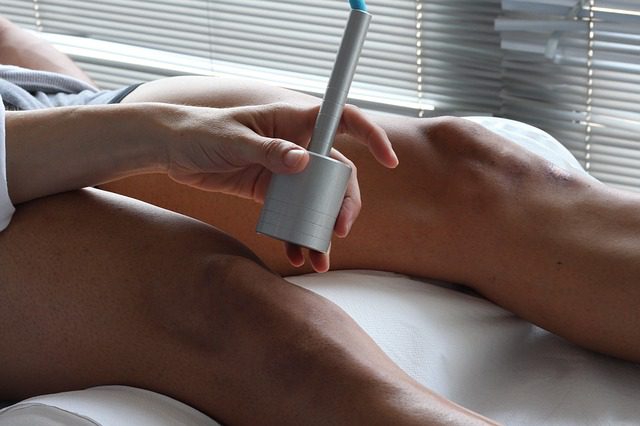Exercise Tips While Recovering From an MCL Injury
The medial collateral ligament (MCL) includes tissues that connect the thigh bone (femur) and shinbone (tibia) to the knee. Its primary function is to stabilize the knee while allowing the legs to extend and rotate with ease and flexibility. Sometimes, however, an over-extension or over-rotation of the knee leads to the tearing or twisting of the MCL. The knees might also incur a trauma due to a direct injury or repeated stress which can cause an MCL injury.
Symptoms and Diagnosis of an MCL Injury
The signs and symptoms of an MCL injury include:
- A popping sound
- Mild or severe pain, depending on the injury
- Swelling of the joints
- Tenderness
- Stiffness
- Locking of the knee joints
- Instability of the knees, especially with added weight
The discomfort normally occurs on the inner side of the knees where the MCL is located. To confirm an MCL injury, you have to undergo a physical examination, a stress test, as well as imaging tests, such as an X-ray or an MRI scan.
An MCL injury is classified according to grade:
- Grade 1 presents minor or mild tenderness and pain without any swelling.
- Grade 2 manifests significant swelling, alongside tenderness and pain, and you might not be able to bend your knees.
- Grade 3 covers a complete tear or rupture in the ligament, with the patient complaining of unstable knees even with the slight movement.
An MCL knee injury takes six weeks to heal on average but treatment and rehabilitation last longer, depending on the doctors’ recommendations.
Related Article: How to Effectively Utilize Stretches for Shin Splints

Treatment Options
Most MCL injuries are treated without surgery. You might only need to:
- Apply an ice pack to your knees
- Wear a knee brace
- Take pain relievers for pain management
- Use crutches for mobility
- Have a proper rest from work or other activities, especially sports
In more severe cases, doctors might need to reattach and sew the ligament tear through a small incision on the inner side of the knee.
Rehabilitation and Exercises for MCL Injuries
Physical therapy and exercises are necessary for MCL recovery since:
- You need to regain the strength and stability of your knees, thigh, and shin following your injury.
- You must restore the range of motion on our legs.
- You have to prevent atrophy or muscle tissue breakdown.
- You need to regain or improve your balance.
The purpose of rehabilitation is also to bring back mobility to your knees. There are some exercises you can do at home but ask your therapist’s guidance or clearance before attempting the following examples:
1. Knee Bending
Lie flat on your back and stretch your legs with your arms at your side. Alternately and carefully bend and straighten your legs but be careful not to force the movement. Do at least 10 to 20 repetitions daily.
2. Leg Raise
Continue to lie flat on your back with your legs stretched out. Slowly raise your injured leg about 8 inches off the floor and hold the position for a few seconds. This exercise will help strengthen your thigh muscles. If you still feel some weakness, anchor your position by bending your uninjured leg to your knees with your foot flat as you raise your injured leg. Do this exercise routine at 15 counts.
3. Heel Prop
Sit down on a chair with your back straight. Slowly set your injured leg on a stool to your front and try to straighten your knees. Put two to five pounds of weight on your thighs and hold this position for five minutes. Do this exercise three times a day.
4. Hamstring Strengthening
Stand against a wall for proper support. Slowly try to lift the injured leg by bending your knees and attempting to reach your buttocks with your heel. Hold this position for 10 seconds and do at least 20 repetitions daily.
5. Wall Squat
Remain standing with your back flat on the wall for balance. Slowly slide down and lower your buttocks as you bend your knees in a squatting position. Hold this position for 10 seconds and repeat the process at least 20 times.
Always have someone nearby while you are doing these exercises at home, just in case you lose your balance and need assistance. Eventually, when your knees are stronger or if your doctors and therapists give the clearance, then you can also add jogging, biking or swimming in your rehabilitation or exercise routines.


*Disclosure: This article may contain affiliate links or ads, which means we earn a small commission at no extra cost to you if you make a purchase through these links. These commissions help support the operation and maintenance of our website, allowing us to continue producing free valuable content. Your support is genuinely appreciated, whether you choose to use our links or not. Thank you for being a part of our community and enjoying our content.
PLEASE CONSIDER SHARING THIS ON YOUR SOCIAL MEDIA TO HELP OTHERS LEARN MORE ABOUT THIS TOPIC. SIMPLY CLICK BELOW!

